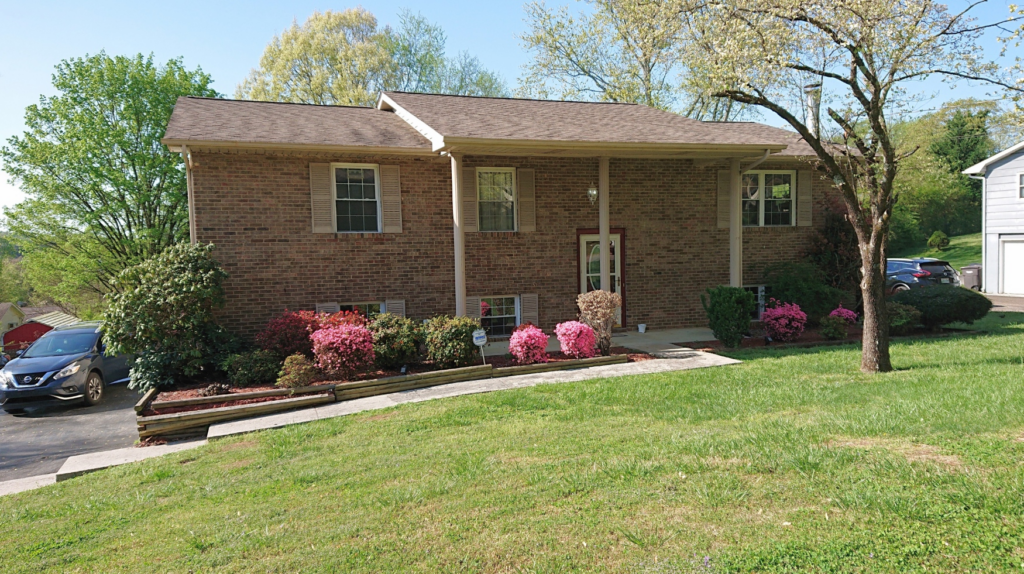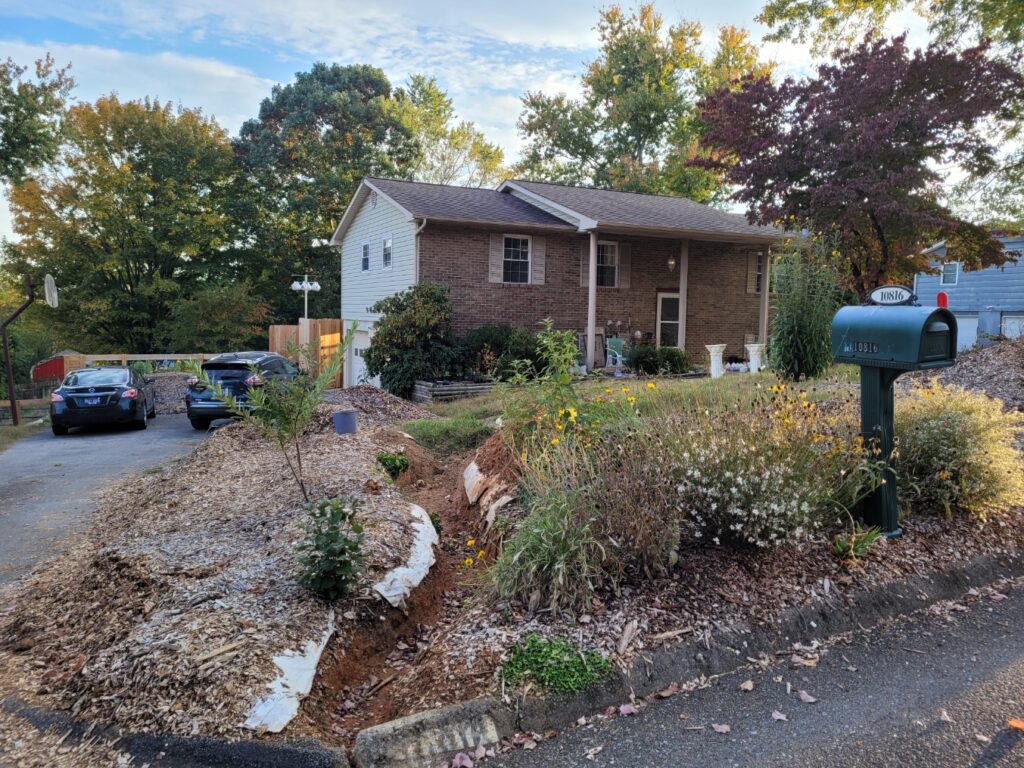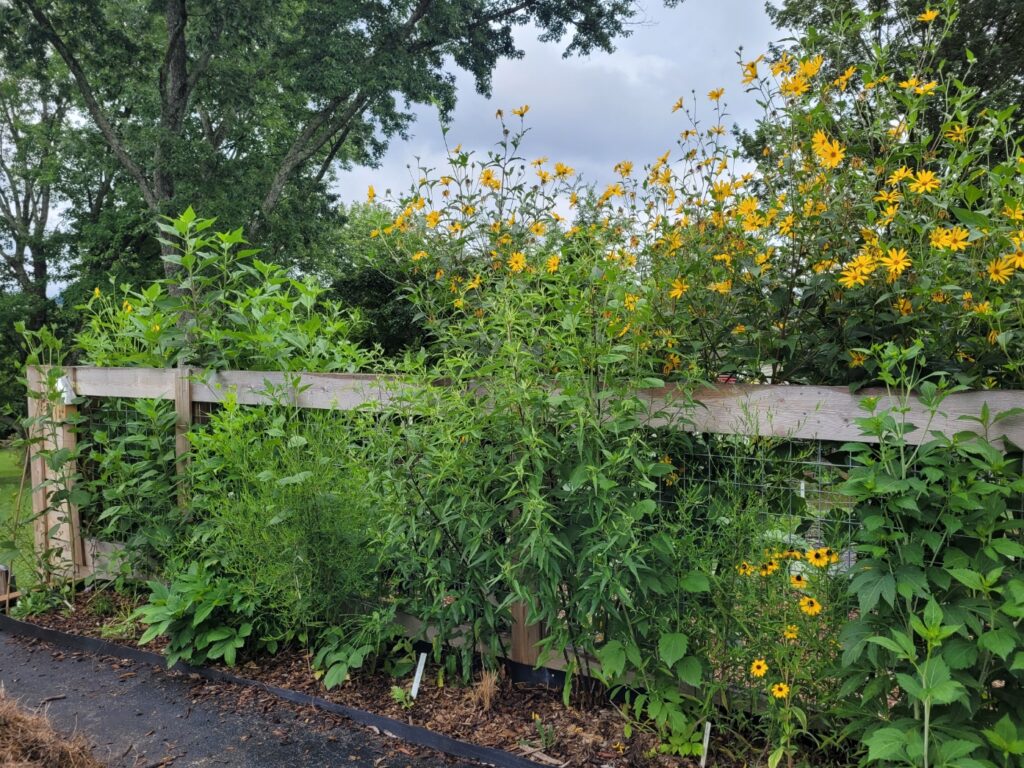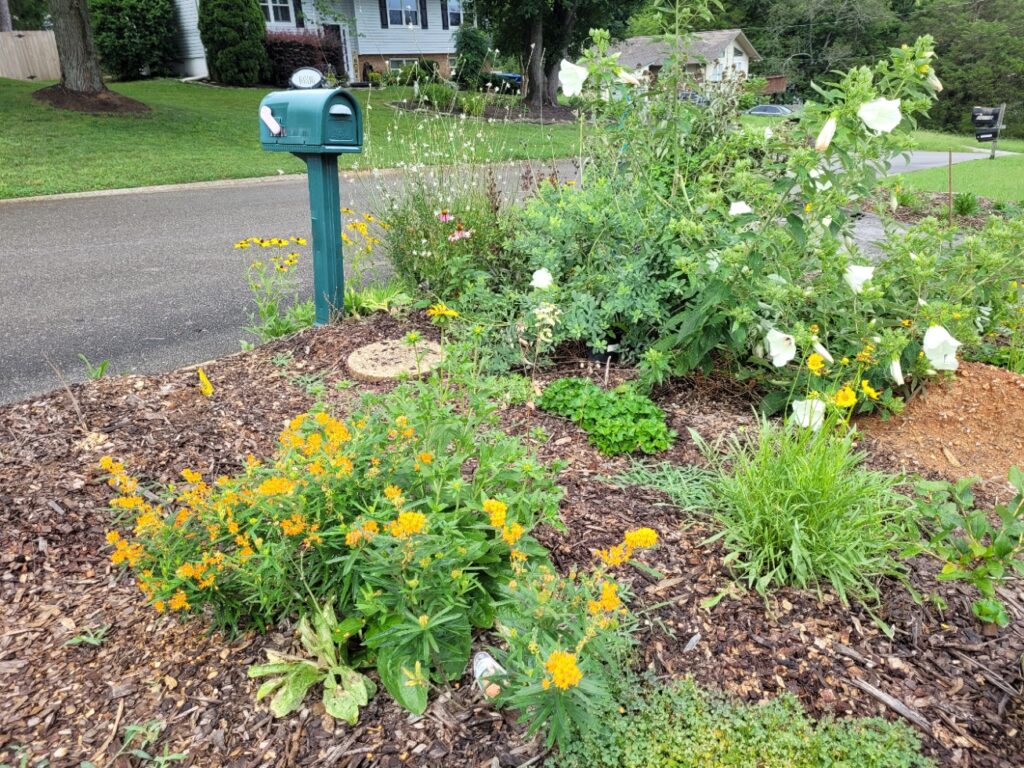Regina Santore said her family purchased their home in Knoxville, Tennessee, in late 2020, mostly for the inground pool, as it provided a “staycation retreat” during the pandemic.
This is an excerpt from the Wild Ones Journal
Current members can log in to read the latest issue or check out the Journal Archives.
“Having moved from the inner city, my young son and I were immediately entranced by our neighborhood’s birds,” she recalled. “We quickly got some feeders and a birdbath. Several species made themselves at home, but not the one that caught my son’s fancy – the ruby-crowned kinglet.”
Santore said they had seen this bird several times on walks around their neighborhood, but never in their own yard.
“We wondered why,” she said. One of their neighbors, an original resident of their 1960s neighbor- hood, commented to her that there were far fewer birds than there once were, and he also wondered where they went.
“This question stuck with me,” Santore said. “What had happened to the birds?”
Her early research indicated that they needed to provide more ways for birds to find food.
“We built a large flower garden, bought big box store plants and grew giant sunflowers,” Santore recalled. It did result in a few more bird species, but not too many. Then she stumbled upon the idea of installing a purple martin complex, through a local birding Facebook page.
“We learned that martins are endangered, and that people need to actively help them by providing more habitat,” she said. “So, we ordered and installed the complex, as well as a bluebird house.”
Although no martins found their yard, a house wren did take up residence in the bluebird box and had a family.
“These were not our target birds for sure,” Santore said. “I questioned why we were not succeeding? What was missing?”


She then discovered the “Nurturing Nature” Facebook group, which focused on native plants for her region. Through that group, she also learned about Wild Ones.
“My eyes were opened,” Santore said. “Habitat was not just pretty flowers from other places; in fact, it wasn’t ‘habitat’ at all, nor was the lawn we were endlessly mowing. It was all the ‘green Sahara.’ I looked at my neighbor’s yard, the one who wondered where all the birds had gone. He had nothing but silver maples and grass. Of course, the birds were gone! We were not helping them in the slightest. They needed the right plants, that is, native plants, so they would have the right food.”
In mid-October 2021, Santore purchased a few native plants from the Native Plant Rescue Squad in Knoxville, thinking she’d do a native planting bed.
“However, they were the most enthusiastic salesmen, and I was an enthusiastic purchaser, so I ended up with many plants that I did not recognize, including several trees,” she said.
Santore started researching where her new plants would thrive. She first reviewed her property, knowing that many of the plants she had purchased were woodland plants, and she only had two trees, both in her front yard.
“I decided that I would create a forest in my front yard,” she said. “That led me to realize I’d have more late-afternoon shade in the center of my front yard if I did, and more things that like morning sun and afternoon shade would thrive there. Then I realized I had many full sun plants that could just as easily thrive in many portions of the front yard as they would in the back yard, and voila! My plan to convert my front yard into multiple habitats with all-native plantings was born.”
Santore drew up her plan on graph paper: a forest island around the existing trees, transitional areas with shrubs and young trees east and west of the island, a blueberry bed, large areas of mostly full sun for pollinator plants and caterpillar host plants, and grasses, dotted with keystone shrubs and small trees.
That December she gathered massive amounts of cardboard and ordered her first load of arborist chips. And, as it was late fall, she picked up loads of leaves (and insects) from neighbors and created an island of duff around the existing trees, with a brush pile in between to provide shelter for the little creatures. On Christmas Eve, she laid the cardboard in her desired shapes and started laying the chips!
In January 2022, Santore ordered soil tests to see what her soil conditions were.
“This is an important step, as many native plants have very specific soil pH needs,” she said. To save money, “I started many native plants from seed using the winter sowing method of placing seeds on soil in milk jugs, then leaving them outside until they germinated.”
Santore recorded them in a master spreadsheet, with details about each plant’s preferred growing conditions. On warmer days, she prepared the soil in the blueberry bed, removing the Bermuda grass (Cynodon dactylon) roots by hand, adding pine needles and oak leaves, and amending the soil with sulfur to lower the pH.
In early spring 2022, after the worst of the cold, she ripped out the first of many nonnative shrubs along the front of the house and started planting native trees and shrubs. She also collected oak stump grindings from a neighbor’s yard to use as mulch for the blueberry bed. “But later that spring it became obvious that I did not have nearly enough wood chips, and the Bermuda [grass] began creeping through with great vigor,” Santore said. “I ordered more chip drops, placed more cardboard, and began spreading a much deeper layer of chips.”
If she were to do it over, Santore said she would use black plastic to kill the Bermuda grass.
She worked in her front yard first, worried that her neighbors would complain about her mountains of chips, milk jugs overflowing with plants and the general unsightliness of her entire property.

“I removed the Bermuda [grass] by hand from around the mailbox, then planted dwarf crested iris (Iiris cristata), heath aster (Symphyotrichum ericoides), guara (Gaura lindheimeri), blanket flower (Gaillardia), black-eyed Susans (Rudbeckia hirta), false indigo (Baptisia) and lanceleaf coreopsis (Coreopsis lanceolata) nearest it, in hopes that this would give the neighbors some idea of what the yard would become,” she said. “Then I went back to struggling against the Bermuda and spreading yet more chips.”
Santore said she had resigned to placing the buttonbush she’d purchased in the backyard because conditions in the front yard were not wet enough to support it.
“I’d wanted it in the front to show the neighbors the fantastic amount of life it would support!” she said. “In late May, however, during the heavy rains, while I was removing Bermuda grass from the cracks in the curb and pavement along the road, I noticed that there was a large gap between my driveway edge and the curb and a great deal of stormwater was passing by my yard on its way down- hill, some of which could be easily diverted into the gap by digging a trench into the yard. At that moment, a rain garden was born, allowing me to grow the buttonbush in the front yard after all, and helping to reduce the stormwater runoff burden on my local creek.”
This summer, Santore worked to fill in the rain garden strip and spread the rest of the chips, as well as removed the rest of the Bermuda grass. Her front yard is now certified by the National Wildlife Federation and Tennessee Smart Yards and is also “on the map” as a Homegrown National Park. In addition, she’s nearly finished earning her “Certificate in Native Plants” from Wild Ones Tennessee Valley Chapter and she’s using the knowledge she’s gained there to educate the public in Knoxville as secretary of the Smoky Mountains Chapter.

“I hope [my efforts] will encourage my neighbors” to follow suit “and spend time with the wild creatures that call our neighborhood home,” she said.
Written by Barbara A. Schmitz.

